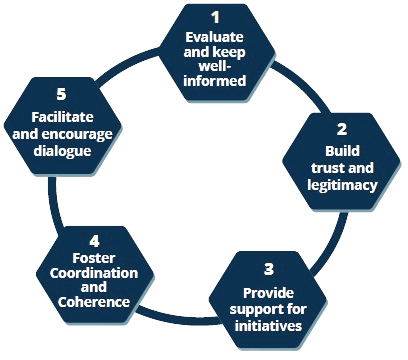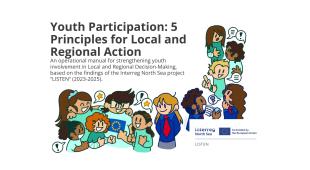The EU Youth Strategy for 2019-2027 highlights a concerning decline in participation among young people in the EU. Given this context, it is crucial to understand barriers to participation and how to foster youth engagement. As part of Interreg North Sea’s LISTEN project, partners from Sweden, France, and Denmark have explored local needs and highlighted good practices to better understand how to support and engage young people. Based on these insights, the project has developed five key principles to help municipalities, regions, and other stakeholders involve children and young people more effectively. This article offers a brief overview of these principles.

Principle 1: Evaluate and keep well-informed
In order to improve and strengthen youth participation, adult professionals must stay well-informed and continuously develop their understanding of young people’s rights, as well as the issues at stake within youth work. This allows for greater impact in counteracting existing problems and increasing participation. However, this requires recurring efforts, learning, and evaluation in order to remain effective.
Principle 2: Build trust and legitimacy
Local stakeholders should have the proper tools and methods in place to be able, in the daily operations of the organization, to respect the rights of children. There should also be an established trust-based relationship with young people, with an emphasis on clarity, feedback, and long-term perspectives.
Principle 3: Provide support for initiatives
Young people who are given the opportunity to develop their own ideas by planning and creating initiatives will learn to take responsibility, manage projects, and will be encouraged to participate more in the community. They will also be an inspiration for other youth. Local stakeholders should thus provide support such as start-up grants, knowledge/networks, and coaching.
Principle 4: Foster coordination and coherence
A coherent and unified approach is important for young people to feel safe and heard by adults. Organizations have the ambition to improve the situation, but collaboration between the many different stakeholders and governance levels is needed to get effective results. Otherwise, scattered engagement risks creating confusion and ambiguity for children and young people.
Principle 5: Facilitate and encourage dialogue
Public actors (e.g. municipalities) often create participation platforms and structures to receive input from young people. This enables them to express their opinions, ask questions to civil servants and politicians in a safe environment, and to influence the local societal development. However, it is crucial to review the actual influence that participants will have. When expectations are not met, the initiative might damage the target group’s trust rather than strengthen it.
Curious to learn more about how to increase youth participation? The downloadable document below provides a deeper look into the five principles, along with real-world examples of local initiatives that have successfully put them into practice.

